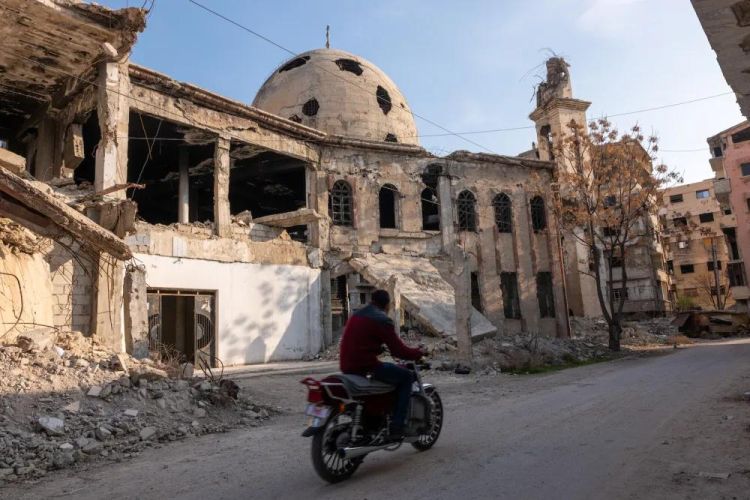By Eric Vandenbroeck and co-workers
It’s Now or Never for Engagement in
Syria
Among the powerful
images following the overthrow of Syrian President Bashar al-Assad’s regime was
the sight of thousands of political detainees streaming out of Syria’s
prisons—a sign of hope and simultaneous grief for the thousands who never
emerged. Days later, as Geir Pedersen, the United Nations special envoy for
Syria, arrived at the notorious Sednaya prison near
Damascus, a woman yelled out to him: “You’re just coming now? It’s too
late!” Her anger should not just be seen as an indictment of the past decade of
global inaction—it’s a warning.
While quick to impose
punitive measures, the international community too often drags its feet when
opportunities for positive change arise. At precisely the moment when the world
should be rushing to support Syrians, decisive action is lacking.
It is a false choice
to hinge all U.S. engagement with Syria on political recognition of the new
authorities, led by Hayat Tahrir al-Sham (HTS), a former al Qaeda affiliate.
For years, concerns about the Assad regime’s corruption, interference, and
violence stifled foreign investment and development programs.
With its fall, new opportunities have emerged to support the Syrian people
directly—with or without a recognized government—while providing clear
benchmarks for the transitional government to unlock wider integration.
There is now a window
of opportunity for recovery. There is a clear moral imperative to alleviate
human suffering. Maintaining the status quo of economic isolation punishes
Syrians for a government they did not choose and that no longer exists.
Millions of Syrians have resorted to extremes to survive the country’s economic collapse, such
as pulling children out of school to beg or work, sending daughters into child
marriage, and selling off assets such as livestock and land.
Scaling up
humanitarian aid is critical. (Last year, donors provided only one-third of the required humanitarian
aid for Syria—the lowest level in a
decade.) But emergency aid is only ever a Band-Aid solution; it cannot cover
the gaping wound of an economy in ruins, shattered by war and suffocated by
blanket sanctions. Already, the war cost Syria 85 percent of the value of its GDP and the equivalent of 35
years of development. Today, 90 percent of Syrians live in poverty. Soon, some of the
5.5 million Syrian refugees abroad could return
prematurely to
devastated homes, gaps in infrastructure, and overstretched
public services,
creating the risk of repeated internal displacements.
This is a recipe for
tension and renewed violence—and will leave Syria stuck in a perpetual state of
crisis. There is strategic value in the United States taking every opportunity
to mitigate the risk of Syria veering toward state collapse and a security
vacuum in a country with a lingering risk of a
resurgence of the
Islamic State or other armed groups.
Instead, in its
hesitation, the United States risks undermining the very stability it seeks.
Over the last 14 years, world leaders have voiced their solidarity with the
people of Syria. How long will Syrians now have to wait for economic relief?
There are three steps
that the Trump administration should prioritize to lay the groundwork for an
economic road map for Syria and to catalyze global action.

First, the United States
should provide legal clarity and sanctions relief. Syrians need immediate
access to more humanitarian aid, commercial activity, and imports to begin
recovery. In a welcome first step, the Biden administration released a new license this month, enabling transactions with the
transition government, including payments of civil servant salaries. However,
its scope is limited. The license fails to lift sanctions or authorize broad
commercial activities, private investment, and technical assistance to
financial institutions. Its six-month duration risks being too short to give
real confidence and produce lasting change. And perhaps most importantly,
it sidesteps the fundamental question of HTS’s terrorist designation.
Syria is caught in a
web of contradictory legal restrictions. It seems to inherit all U.S. sanctions placed on the Assad regime (first imposed with
Syria’s designation as a state sponsor of terrorism in 1979 and later
intensified after the civil war erupted in 2011). At the same time, it has been
saddled with the confusion over whether the terrorist designation of HTS
applies to the entire transitional government. While U.S. leaders herald the
fall of the Assad regime, the Biden administration quietly affirmed this month that key Assad-era restrictions
remain in place.
The United States
should make clear that these are new authorities in power, representing a range
of groups and not synonymous with HTS or the previous regime. The United States
should also reconsider its foreign terrorist organization (FTO) designation of
HTS. FTO designations are not an appropriate tool for groups that govern large
populations, as the designation creates criminal liability risks for aid
workers, businesses, traders, and others if they provide material support to
the group.
For updates click hompage here